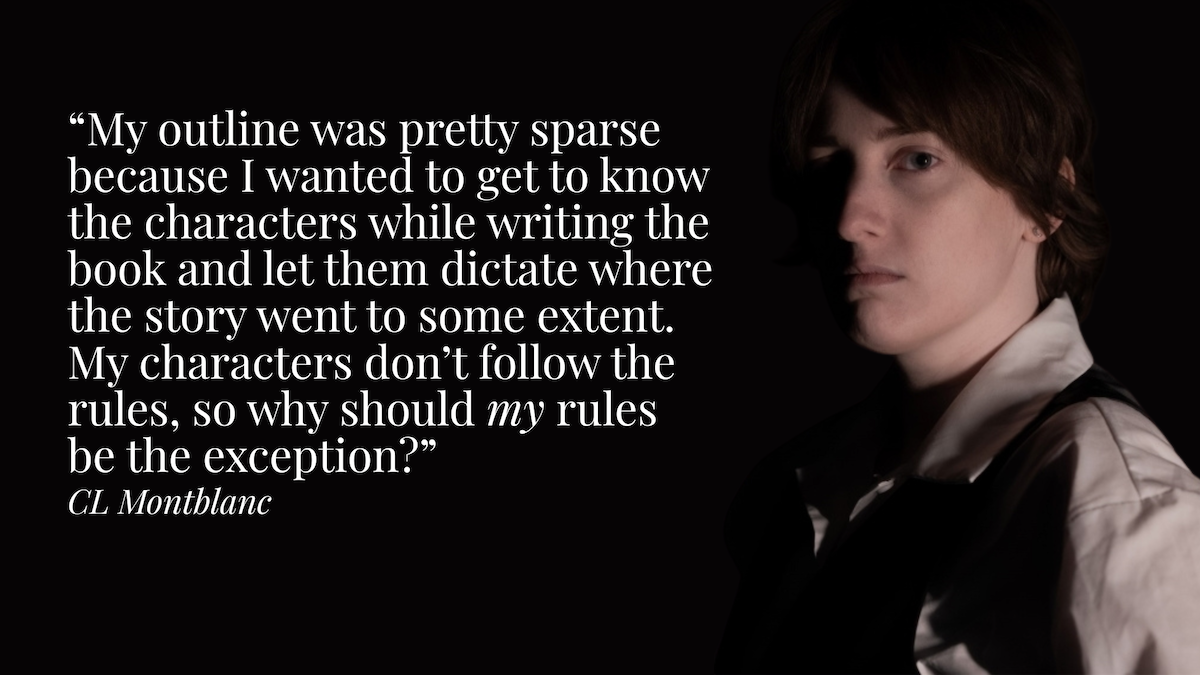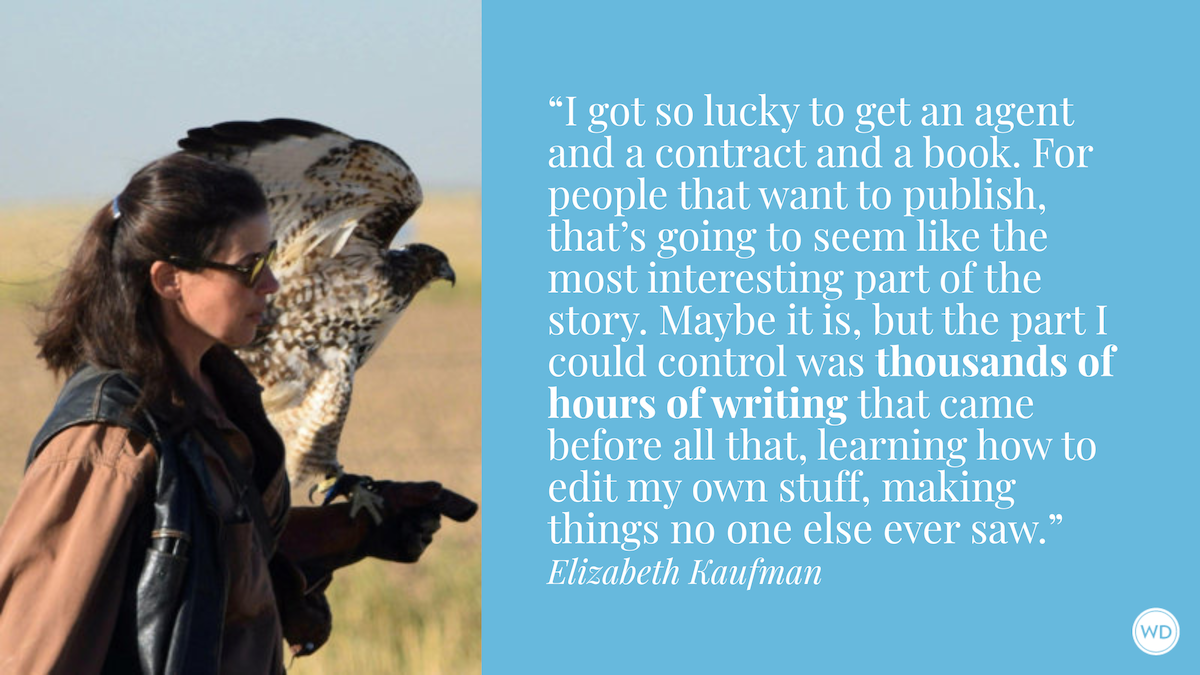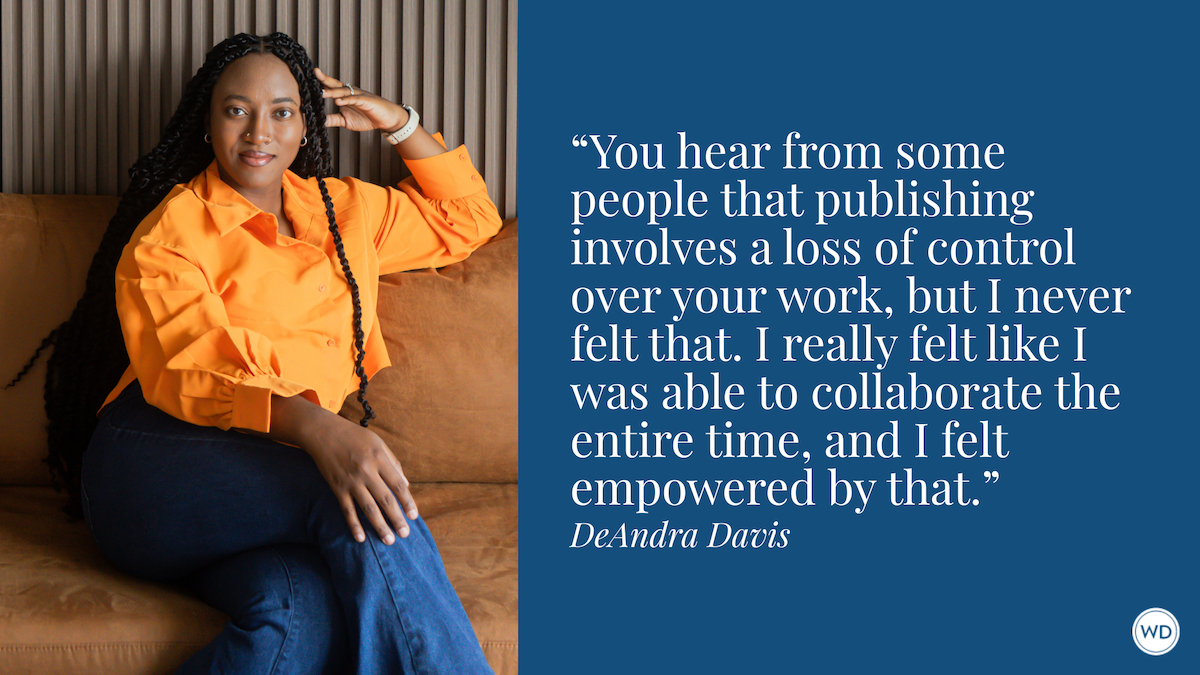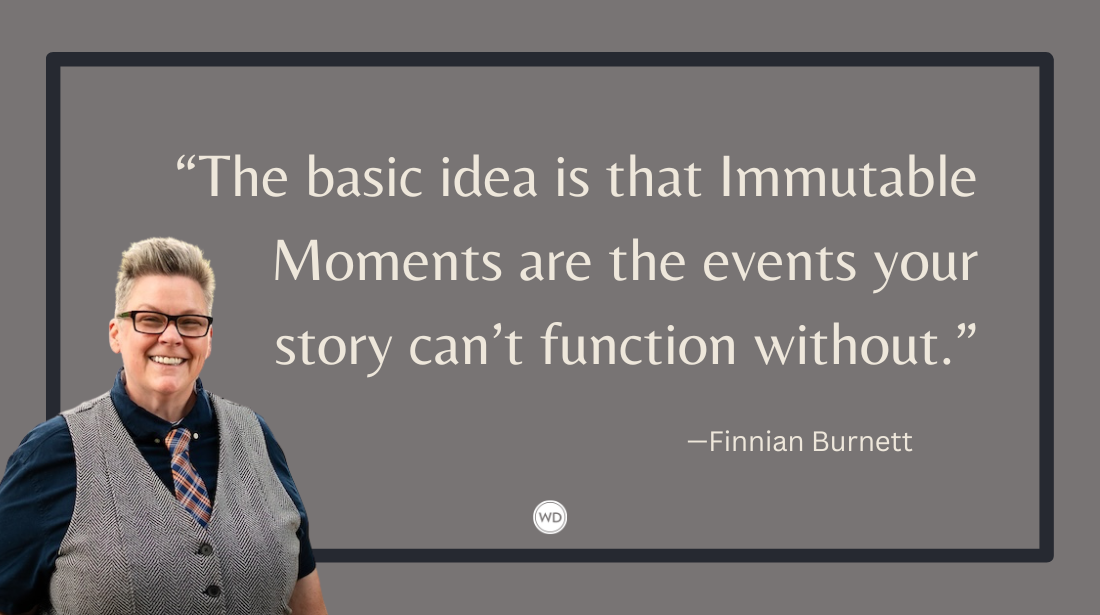How to Add Humor to Your Novel During Revision
Revision is your chance to add humor and entertainment value to your writing—in any genre. Stand-up comic Leigh Anne Jasheway shares how to do it.
The human desire to laugh is profound. We tune in by the millions online and on TV to watch videos of goats frolicking and people walking into doors—and who among us hasn’t been taken in by an @HonestToddler tweet or Grumpy Cat meme? We’re not just wasting time; studies show that when we giggle, guffaw or snort together we feel closer to those who join us. We also let go of stress and are better able to resolve the incongruities and misdirections that life throws our way.
As writers, we can tap into the power of laughter—no matter our genre—to build a larger and more loyal readership, elevate our work from good writing to memorable writing, and become more creative and productive. Even if you don’t think of yourself as a humorous writer, you have to admit: What’s not to love about that?
Adding humor is easier than you think when you know some tried-and-true techniques to make your readers smile. So when it comes time to put the finishing touches on your self-help article, the opening chapters of your novel, your latest nutrition blog post, your horror screenplay, your list of ways to avoid work, or whatever your current project, consider these simple ways to add entertainment value and become the kind of unforgettable writer fans flock to.
You’re entitled to funnier titles.
As an instructor at the School of Journalism and Communication at the University of Oregon as well as at Lane Community College, I read a lot of papers. Some students title theirs by summarizing the assignment: “Compare and Contrast Sense of Humor Among Different Groups,” for example. With this much excitement to start things off, chances are I’ll be half-asleep by the time I reach the concluding paragraph. For the same assignment, another student chose this: “A College Student, an Octogenarian and a Rabbi Walk Into a Bar …” Now there’s a paper I wanted to read (and one that got a better grade).
I wrote a blog post last year that I titled “Naked and (Somewhat) Unafraid.” I chose that title because it combines a little humor, a little provocativeness and a direct connection to readers’ emotions. That’s always a good recipe for a title. Even when you can’t think of a clever quip, keep in mind this simple “K” rule of comedy: For whatever reason, words with the “k” or hard “g” sounds are funnier than those without.
By the time I count to three …
Any piece of writing is bound to be filled with lists. On Jennifer Sparklebritches’ Poop in My Hair blog (talk about a memorable title), she writes, “I can’t throw, I never make baskets, I can’t climb the rope, and every time I try to catch something I [end] up here with a bloody nose.” If you think about it, even the Bible has a top 10 list, right?
Any time you itemize, you have an opportunity to add a smile by including something unexpected. In “Find Your Soulmate Posted on Fridge,” a recent installment of my humor column for Oregon’s The Register-Guard, I wrote this about online matchmaking questionnaires: “Some questionnaires require that you provide answers about your relationship with your parents, your approach to dealing with money, and whether you consider Fifty Shades of Grey a romantic book or good kindling for a fire.”
Lisa Kanarek, one of the authors I am currently coaching, writes a blog called Working Naked. She wrote this about the perfect gift for women who work from home: “They could buy you a new iPad case (can you have too many?), new yoga pants (you definitely can’t have too many), or a travel mug for the 10-second commute to your home office.” Let’s rewrite it slightly to add some misdirection. All we need to do is change the third item to become what’s known in comedy writing as a “rule of three” joke—the first two items establish a pattern, and the third gets a laugh because it is unexpected: “They could buy you a new iPad case (can you have too many?), new yoga pants (you definitely can’t have too many), or a case of laser pointers for your cats (if you’re working from home, you probably have too many).”
Release the tension hounds.
One of the major reasons we laugh is to let go of anxiety, tension and fear. In humor theory, this is called “arousal relief,” and as a writer you can use this information to your advantage to identify specific parts of a manuscript that cry out for a lightening of the mood during the revision process.
If you want a quick primer on how comedy is used to lighten dark or scary moments, think about the purpose of C-3PO in the Star Wars movies—he appears in scenes immediately following those in which the dramatic tension is almost overwhelming and says something like, “Don’t worry about Master Luke. I’m sure he’ll be all right. He’s quite clever, you know … for a human being.” Humor also relieves tension on TV cop dramas. If you watch closely, you’ll see that almost every time a character cracks a joke, it almost immediately follows something grisly or distressing.
When revising your own writing, look for paragraphs or sections that need a moment of laughter to allow the reader to process what has come before and be more receptive to what lies ahead. Here’s a great example from Elizabeth Kinsey’s essay “Broken Stove House” in the anthology Ask Me About My Divorce, in which she discusses the aftermath of her marriage crumbling: “I’m always shocked to enter my old house and find it exactly how I left it, except much dustier and more cluttered. … When a friend of ours asked my ex why this house looked like a ‘Beth Museum,’ he said, ‘Men will take any decorating scheme if it’s already there, regardless of whether it’s their ex-wife’s or Bozo the Clown’s.’”
Call 1-800-FUN-NY4U.
Anytime you conduct an interview for a nonfiction piece, look for opportunities to up the humor quotient by letting your interviewee be funny for you. This is a great strategy, because it takes the humor mantle off your shoulders and puts it onto someone else’s—and it allows you to maintain your professionalism about the topic while including some lighter touches along the way.
No matter the topic, you can find someone who can provide useful information served with a side order of giggles. I once interviewed a grief counselor who said, “My job is a lot like being a bartender, only I don’t have to know how to mix drinks because most of my customers come in soused.” When going through your transcripts, don’t just look for straightforward nuggets of info—you’d be misguided to leave that a gem like that one on the cutting room floor.
Thanks to the Internet, all you need are a few keywords in your favorite online search engine to compare possible interviewees up front. Look at their websites and any articles they have written to see if they seem to have a sense of humor that comes through. If you have a choice between an interview subject whose home page puts you to sleep, and one whose blog makes you snort chocolate soy milk through your nose, choose accordingly.
Steal the punch line.
For me, writing fictional dialogue has never been difficult. I attribute this not to any special writing talent, but to my keen hearing and willingness to eavesdrop on anyone at any time—I even routinely assign an eavesdropping exercise to students in my comedy-writing classes.
Once you start listening closely, you’ll see just how funny people are in everyday interactions about nothing in particular. This highlights a second humor theory, called “social bonding,” that says we tend to gravitate toward people who can make us laugh, no matter the circumstances. In the middle of a very serious conversation between two women in their 60s about the pitfalls of aging, I overheard one say, “My mom’s motto was: ‘When the going gets tough, you probably have cancer.’” That line ended up in one of my screenplays.
If you’re rewriting dialogue and find that yours is too serious, get out of your own head and into a restaurant, city bus, doctor’s office, clown college. … As you listen in, keep this tip in mind: Laughter comes from three places—the stomach, the brain and the heart. Stomach-based laughter speaks to our need to feel better about ourselves at someone else’s expense. Brain-based laughter requires us to process something as a “joke” before we can laugh at it. And heart-based laughter comes from shared experiences that bring us joy and love.
If you think about your characters’ (whether real or fictional) senses of humor in these terms—stomach, brain and heart—it will help you bring the funny while keeping each unique.
Where are we going and why are we in this handbasket?
Anytime you take your readers on a journey, your job is to keep them on the path with you, and the best way to do that is to draw as visual a picture as possible. Fortunately, specificity also provides opportunities to add funny. Which is funnier: “I drove to the store in my car,” or, “I drove to Everything’s a Dollar, But You Don’t Need Any of It in my 1990 Pinto with a missing passenger door and bumper sticker that says ‘Honk if you see stuff falling off’”?
I blog about being a dog mom on Wag Not Whine. In a recent post about caring for my 15-year-old
When you’re revising a manuscript to provide more detail and paint a better picture, you are faced with dozens, if not hundreds, of words to do the job. Many writers rely on an online thesaurus for help, but you have other options. Specifically seek out funnier and more interesting word choices at sites such as InherentlyFunny.com.
Now that you’ve entered the rewriting phase of your project, don’t sit there like Grumpy Cat wishing someone else could do it for you. Consider this your opportunity to add fun and funny to your writing. You may just find that rewriting soon becomes your favorite part of the process.
Leigh Anne Jasheway is a stress management and humor expert, comedy writer, stand-up comic, and comedy instructor/coach. She has an M.P.H. degree which is either stands for masters of public health or mistress of public humor She consults with organizations on how to use humor to manage stress, change, and conflict, and boost creativity, teamwork and morale. In 2003, she won the Erma Bombeck Award for Humor Writing, has 21 published books and has hosted two radio programs, Women Under the Influence of Laughter, on KOPT AM in Eugene, Oregon and the Giggle Spot, on All Comedy 1450. She also teaches comedy writing and stand-up and is a part-time faculty member at the University of Oregon School of Journalism and Communications. Follow her @lajfun and accidentalcomic.com.








